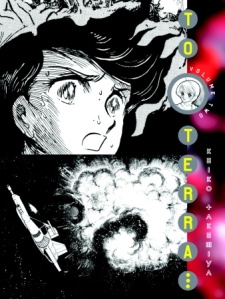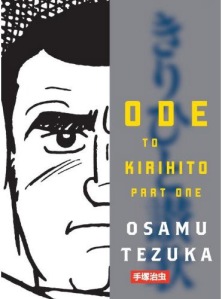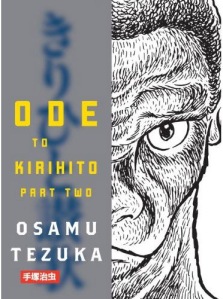I’m digging into the Flipped archives again. This one came out just as Natsume Ono’s work was starting to be licensed in English. It focuses primarily on her first licensed work, which generated some mixed reaction, though I loved it.
 I’ve given up on prognostication. Experience has demonstrated that I’m usually too optimistic, and looking back at my predictions makes me realize that they’re more in the line of affirmations than realistic expectations. I will indulge in one, though: by the end of 2010, a lot more people will be aware of the work of Natsume Ono than they were when the year began.
I’ve given up on prognostication. Experience has demonstrated that I’m usually too optimistic, and looking back at my predictions makes me realize that they’re more in the line of affirmations than realistic expectations. I will indulge in one, though: by the end of 2010, a lot more people will be aware of the work of Natsume Ono than they were when the year began.
To be honest, I’d never heard her name at the beginning of 2009. My first glimpse of her work came through a random copy of Kodansha’s Morning 2, which is serializing Ono’s Coppers. I remember thinking that those pages didn’t look much like anything else in the magazine. It took me a while to connect the creator of Coppers with my next encounter with Ono.
That happened at Viz Media’s online IKKI anthology, which serializes chapters of Ono’s House of Five Leaves. It’s one of those series that on first glance leave you not quite sure what you just read, though in a very pleasant way. The opening chapters leave the doors of possibility wide open, and subsequent installments don’t so much shut them as fill in the details of those possibilities.
It’s about an out-of-work samurai, Akitsu, who becomes entangled with a gang of kidnappers. Akitsu doesn’t resemble the standard manga samurai in physicality or disposition, lithe and diffident instead of sturdy and aggressive. It’s easy to see why he’s unemployed, but it’s enticingly unclear why gangster Yaichi lures Akitsu into his circle. It could be that Akitsu is easy to manipulate and the last person you’d expect of ulterior motives, or it could be simple, unexpected fondness. Yaichi might merely like to have Akitsu around.
Ono seems entirely comfortable with leaving readers to guess where things might be headed in terms of event and even intent, though I always have the sense that things are moving in interesting directions. Her work seems both confident and restrained. It also seems just slightly askew of what one might expect when one considers demographics like seinen (comics for adult men), josei (for adult women) or yaoi (male-male romance, which Ono has created under the name “Basso”). So it makes sense that the magazines that have featured her work – Morning 2, Shogakukan’s IKKI, the late Penguin Shobou’s Comic SEED! – seem less designed to cater to a specific demographic than to simply publish an interesting variety of comics by accomplished creators.
The first Ono title to see print in translation, not simple from Viz, arrives this week, and the publisher has posted the first chapter online. Comics creator, editor and critic Shaenon K. Garrity has described the book as “scary good,” and I’m in complete agreement. I think it compares favorably to one of the most acclaimed books of 2009, David Small’s Stitches: A Memoir (W.W. Norton). Like Small’s autobiography, not simple explores the hideous consequences of parental cowardice and cruelty, and, like Stitches, it’s constructed and paced with admirable precision and craft. As was the case in Stitches, I’m reluctant to describe the plot in too much detail, as a great deal of pleasure is derived in the timing with which Ono reveals the underlying facts of her characters’ lives.
The book follows a young Australian man named Ian, barely more than a boy, really, as he searches for his older sister, the only bright point in his grim experience with family life. Along the way, he meets a writer, Jim, who’s taken with Ian’s story both for its inherent pathos and for its narrative possibilities – he wants to know how Ian’s story comes out at least partly because he wants to tell it. Ian’s life and Jim’s novel intersect and overlap, and the story-within-a-story elements aren’t always entirely successful, but Jim’s mixture of sympathy and self-interest give Ian’s tragedies a needed edge and the possibility of at least a little remove on the part of the reader. One of the recurring criticisms I saw for Stitches was that it was just so depressing, a quality compounded by the fact that the events it portrayed actually happened. In not simple, Ono is playing with the idea of tragedy as an entertainment beyond merely presenting a tragic series of events. It’s an intriguing extra element, even if it isn’t seamlessly applied.
Ono doesn’t engage in the kind of experimental illustration that’s sprinkled throughout Small’s work, but her drawings are striking, characterized with a kind of crude fragility that supports the tone and content of her story. Like everything else about not simple, its look is deceptively… well… simple. Fans of Bryan Lee O’Malley’s Lost at Sea (Oni Press) would feel very much at ease with a cartoonish style invested with emotional depth and urgency.
People who have sampled House of Five Leaves, which is scheduled for print release in April of this year, might be surprised that not simple was drawn by the same creator. The former has a lean elegance that’s really in contrast to the more stylized look of the latter. I’m fond of both styles for their individual virtues and for the fact that they both come from the same pen. It’s exciting to see that Ono’s versatility in terms of content and tone extends to her work as an illustrator.
There’s just so much to admire about Ono’s work – its variety, its uniqueness, the level of talent it suggests. I don’t think it’s unreasonable to hope that she becomes one of those creators whose popularity transcends the audience specifically interested in comics from Japan and those who are interested in well-made comics in general. Her work seems to have transcended any specific demographic in Japan, and I believe it will here.







































